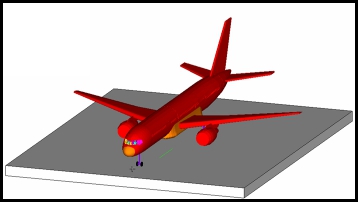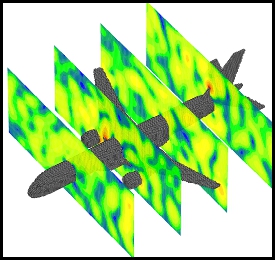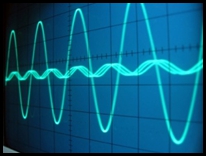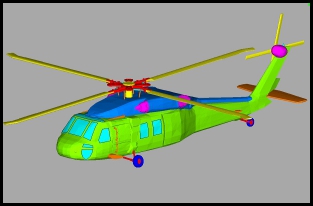EM Simulation of Entire Aerospace Vehicles and Facilities Down to Individual Wires
EMA has integrated a range of proven simulation technologies and CAD manipulation tools into a single framework. This combined with parallel algorithms and increases in computational performance give the ability to model electromagnetic environmental effects events on entire vehicles or facilities down to individual electronics interface pins.
EMA has integrated a range of proven simulation technologies and CAD manipulation tools into a single framework. This combined with parallel algorithms and increases in computational performance give the ability to model electromagnetic environmental effects events on entire vehicles or facilities down to individual electronics interface pins.
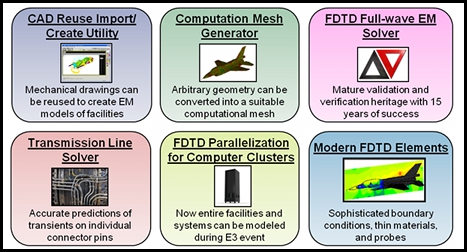
State-of-the-Art Electromagnetic Environmental Effects Analysis
In recent years, full-wave electromagnetic simulation of environmental effects has matured to the point that it is accepted for determining component test levels and internal environments.
A CAD-derived electromagnetic model of the facility or vehicle is constructed, and the internal E- and H-field environment along with currents flowing on cables is determined. This results in a significant cost savings over a full-scale test, and the amount of margin necessary is orders of magnitude lower than using a generic handbook or standard value because it is based on the actual geometry of interest.
This internal environment is used in the final certification testing of individual components, which is customized for each component’s expected conducted and radiated threat level.
In recent years, full-wave electromagnetic simulation of environmental effects has matured to the point that it is accepted for determining component test levels and internal environments.
A CAD-derived electromagnetic model of the facility or vehicle is constructed, and the internal E- and H-field environment along with currents flowing on cables is determined. This results in a significant cost savings over a full-scale test, and the amount of margin necessary is orders of magnitude lower than using a generic handbook or standard value because it is based on the actual geometry of interest.
This internal environment is used in the final certification testing of individual components, which is customized for each component’s expected conducted and radiated threat level.

Safety Community Acceptance
EMA3D is listed in the SAE Aerospace Recommended Practices guidelines as a method of determining component level lightning indirect effects transients (ARP 5415) and high intensity RF conducted and radiated transients (ARP 5583). The simulation results become the basis for individual component testing.
The EMA approach is becoming common for lightning and high intensity RF qualification for FAA, NASA, and DoD qualification programs.
EMA3D is listed in the SAE Aerospace Recommended Practices guidelines as a method of determining component level lightning indirect effects transients (ARP 5415) and high intensity RF conducted and radiated transients (ARP 5583). The simulation results become the basis for individual component testing.
The EMA approach is becoming common for lightning and high intensity RF qualification for FAA, NASA, and DoD qualification programs.
